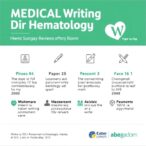
Managing Director
Biotech Investment Banking at Truist Securities
The old saw, “You can’t tell the players without a scorecard,” is an especially fitting way of describing the effect of the overhaul in progress at the U.S. Department of Health and Human Services (HHS) and the agencies it oversees that regulate biopharma—especially the FDA, the NIH, and the U.S. Centers for Disease Control and Prevention (CDC).
Earlier this month, HHS began eliminating some 10,000 jobs as announced in late March by HHS Secretary Robert F. Kennedy Jr. The 10,000 jobs include 3,500 positions at the FDA, 2,400 at the CDC, 1,200 at the NIH, and another 300 positions at the U.S. Centers for Medicare and Medicaid Services. Yet within a week of partnering with the Elon Musk-led Department of Government Efficiency (DOGE) to swing the proverbial axe, Kennedy projected that up to 20% of the job cuts or roughly 2,000 jobs, had been eliminated in error.
While defending the HHS-DOGE overall effort to eliminate redundancies such as “over 100” communications departments, “over 40” procurement departments, and dozens of IT and HR (human resources) departments, Kennedy acknowledged: “There were a number of instances where studies that should not have been cut were cut, and we reinstated them.
“Personnel that should not have been cut, were cut. We’re reinstating them. And that was always the plan,” Kennedy said April 3, speaking with reporters in Virginia. “We’re going to do 80% cuts, but 20% of those are going to have to be reinstated, because we’ll make mistakes.”
“We’re going to make it work for public health. We’re going to make it work for the American people,” Kennedy vowed.
The staggering shrinkage of the department’s workforce and consolidation of programs led to dire predictions from some former officials and others about a bleak future for U.S. life sciences activity. “The FDA as we’ve known it is finished,” declared former commissioner Robert Califf, MD, who held the position in the administrations of Barack Obama (2016–2017) and Joe Biden (2022–2025).
Lorenzo Paoletti, managing director, Biotech Investment Banking at Truist Securities, discussed the effects of recent job cuts and restructuring of the regulatory agencies with GEN Edge. (This interview has been lightly edited for length and clarity.)
On how the job cuts, resignations, and restructurings of the regulatory agencies are reshaping the landscape for biotech business:
Lorenzo Paoletti: We’re entering a very new territory for biotech. [Following Peter Marks’ resignation], several companies that operate in the vaccine or rare/genetic medicine space traded down on the back of this news. Some companies that operate in these therapeutic areas have lost significant market cap.
The questions that boards are asking are, “How are we going to get our products to the next stage of development? What’s going to be the approval process? What’s the implication for future study designs in this particular area? Will average times to approval increase or decrease?”
On the effect of tariffs on biopharma businesses:
When you start thinking about the impact that tariffs can have, we’re talking about actual components of drug manufacturing: It could be the box. It could be the capsule. It could be the syringe among other key manufacturing elements. All of a sudden, the P&L [profit-and-loss] of these companies, from revenue to Ebit [earnings before interest and taxes] to EPS [earnings per share], could change. Their cost of goods could change. All of a sudden, if you’re a CFO of a public biotech potentially affected by these dynamics, you need to think very hard about what you’re going to say the next quarter.
On the effect of developments in Washington on merger-and-acquisition (M&A) activity in biopharma:
Large pharmaceutical companies have generally been very active from an M&A perspective, looking to replenish or augment their pipeline. This is a healthy behavior that is part of our ecosystem. But if you’re a CFO or a CEO of a large pharmaceutical company, and you have all this uncertainty ahead of you, maybe waiting to execute on M&A is the prudent business decision. We have to see how things are going to pan out with the administration. Kicking the can down the road—referring to a potential acquisition—might make more sense. Some management teams at this stage are telling us that it’s more prudent to keep cash on hand vs deploying it for M&A. Uncertainty around tariff policy and the actual financial mid-to-long-term impact is hindering M&A.
M&A started really well in January, but at that time, the administration had not yet articulated its plans around tariffs and FDA-related changes. Since then, unfortunately, a lot has happened that has hindered volumes. I don’t think we knew in January the extent of the repercussions and the actions that the Trump administration was going to take. I don’t think we have visibility into that now.
On the likelihood of smaller, smarter M&A deals going forward:
We should be able to see smaller M&A deals. First, we need to see the market stabilize, given the opportunity for both the buy-side and corporates to absorb and digest these drastic policy changes. Once these dynamics stabilize, perhaps toward the tail end of Q2, maybe mid-Q3, we could see a bit more activity on the M&A side. From my perspective, if M&A activity picks up, it will be more around the add-ons and deals in the sub $5 billion range.
On how the administration’s actions toward the FDA will affect biopharmas:
The communication between a chief medical officer, regulatory team at a biopharma, and the FDA is quite constant. So, the question now becomes, are those communications going to be limited because of the lack of personnel? Is there going to be a lack of trust from executives toward the FDA, now that we have lost talent at the agency?
The question is what type of guidance is the FDA now going to give, in terms of trial design, trial structure, such as endpoints and key scientific parameters? Then, as the biotech community might receive new guidelines, are they going to trust those guidelines? Are they going to agree with those guidelines? And what does that mean in terms of speed to get these drugs to the next inflection point?
On the effects of administration actions on IPO, VC markets—even as several biotechs have reported strong, positive data readouts:
Generally, the stock reaction has been quite good, which is different than what was happening in 2022 as we were coming off the COVID-19 bubble (when the biotech market entirely inflated and valuations came down). We have worked through those obstacles quite well, and now we have more mature sound biotechs, both on the private side as well as the public side. Most importantly, there has been generally a valuation reset.
VCs and crossover investors have learned from the dynamics that led to the 2020–2021 overheated period, and they’re holding on to private companies longer. Given current dynamics, investors are holding private companies and the drug development risk associated with their pipelines longer. Biotechs are going public with more human data in hands, therefore, generally risk is transferred to public markets later, which makes sense. All these dynamics point to better fundamentals for the space.
On what is driving the IPO, VC volatility:
They are mainly driven by geopolitical macro external factors. They’re not entirely external when you decide to change the entire FDA composition—that’s quite important here. But it’s not because of the fundamentals. I think the fundamentals are sound.
On the likelihood of investors or startups holding off going public a little bit longer as a result:
Some fund managers are managing LPs’ [limited partners] expectations. Exit timelines might be extended. I don’t think it’s entirely bad. Especially in biopharma, I think it’s rational for a biotech to be private for longer until the drug is showing meaningful human data. Twenty, thirty years ago, as the Biotech industry was emerging, the general philosophy was to keep emerging biotechs private longer until meaningful data was generated.
As the biotech goes through the private journey, maybe it can change hands from early-stage VCs that are more focused on seeding companies to mid-stage VCs that can take the company to the first portion of human trials (Phase II/Phase IIb). This ecosystem is getting titrated quite well and investors are certainly getting ready for this type of value chain process.


